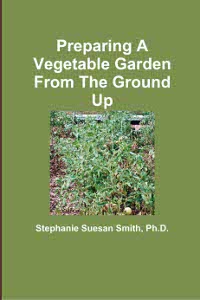In September of 2002, I went to Guyla, Hungary, on the Hungarian/Romanian border. I flew into Budapest and drove to Guyla. It was only about a 100 miles, but took three hours because they have no interstates, just farm to market roads. Hungary is at a latitude similar to Kansas, and is one of the bread basket countries in Europe. Although  many of the fields had already been harvested, we saw acres of corn, wheat, and sunflowers in the fields along the roads. In fact, the part of Hungary I was in was very flat and looked a lot like the Lubbock area of Texas. The only trees were along creeks or along the fence rows to cut down on erosion from the wind. If I had not suffered through a 14 hour plane ride, I would have expected to hear a West Texas drawl come from the first person I spoke to. Actually, though, everyone spoke Hungarian and German, but very few people spoke English, so I got by with a few words of German and a lot of sign language.
many of the fields had already been harvested, we saw acres of corn, wheat, and sunflowers in the fields along the roads. In fact, the part of Hungary I was in was very flat and looked a lot like the Lubbock area of Texas. The only trees were along creeks or along the fence rows to cut down on erosion from the wind. If I had not suffered through a 14 hour plane ride, I would have expected to hear a West Texas drawl come from the first person I spoke to. Actually, though, everyone spoke Hungarian and German, but very few people spoke English, so I got by with a few words of German and a lot of sign language.
 Every where I went, people had small garden plots. The food distribution system over there is not nearly as efficient as our’s, so for most of the year these people are dependent on their gardens for the vegetables they eat. In fact, since I was there at the end of their harvest season, the only vegetables I saw were tomatoes, cucumbers, and a type of white bell pepper. No other vegetables were available at that time of the year. The first thing I did when I got home was have a big salad!
Every where I went, people had small garden plots. The food distribution system over there is not nearly as efficient as our’s, so for most of the year these people are dependent on their gardens for the vegetables they eat. In fact, since I was there at the end of their harvest season, the only vegetables I saw were tomatoes, cucumbers, and a type of white bell pepper. No other vegetables were available at that time of the year. The first thing I did when I got home was have a big salad!
 In addition the the garden plots, each house was covered in flowers. Even the apartment dwellers had flower boxes that contained pansies and other pretty flowers. Each restaurant had flowers on every table, and the public spaces were very well landscaped. It is apparent that growing things is important to people in this region for more reasons than just wanting something to eat.
In addition the the garden plots, each house was covered in flowers. Even the apartment dwellers had flower boxes that contained pansies and other pretty flowers. Each restaurant had flowers on every table, and the public spaces were very well landscaped. It is apparent that growing things is important to people in this region for more reasons than just wanting something to eat.
 For more help gardening, buy my book, Preparing A Vegetable Garden From The Ground Up
For more help gardening, buy my book, Preparing A Vegetable Garden From The Ground Up
Available in print or ebook from Amazon.com or other retailers, this book walks you from choosing the site of your garden all the way through what to do after the harvest. Buy a copy for yourself or a friend today!


Sounds so beautiful. I am stuck in L.A. so all I have to see is buildings and more buildings. The closest thing to a garden is on my front porch. Where else have you been? Was Guyla one of the most beautiful places that you have been to?
The buildings were 1960s Soviet cookie cutter buildings, and oppressive, but the plants were beautiful. The people were nice. You know, you can grow a quite respectable garden in containers on your front or back porch. Probably back if you actually want to harvest the vegetables. Lots of plants will do just fine and you can have peppers, tomatoes, herbs, even cucumbers and squash if you trellis them.
I’ve always wanted to see Hungry, I’ve heard that it’s like the UK but 40yrs ago. It’s nice to hear of people creating their own beauty from the simple things instead of going out and buying anything – there is a simple honestly in it.
This was not a very wealthy area, and if people did not create it, they probably could not afford it. The plants were not only pretty, they provided fruits and vegetables that were otherwise hard to get.
I love the Hungarian hanging baskets photo. The baskets really bring the building to life
The baskets and flowers relieved the otherwise dreary architecture. There were not any pretty buildings, they were all razed by the Soviets when they invaded Hungary in the 60s.
This really is incredible. It saddens me that in the time I spent living in England the furthest west I went was Germany (which isn’t really all that far to begin with. You’ve just convinced me to add Hungary onto my list of countries to visit.